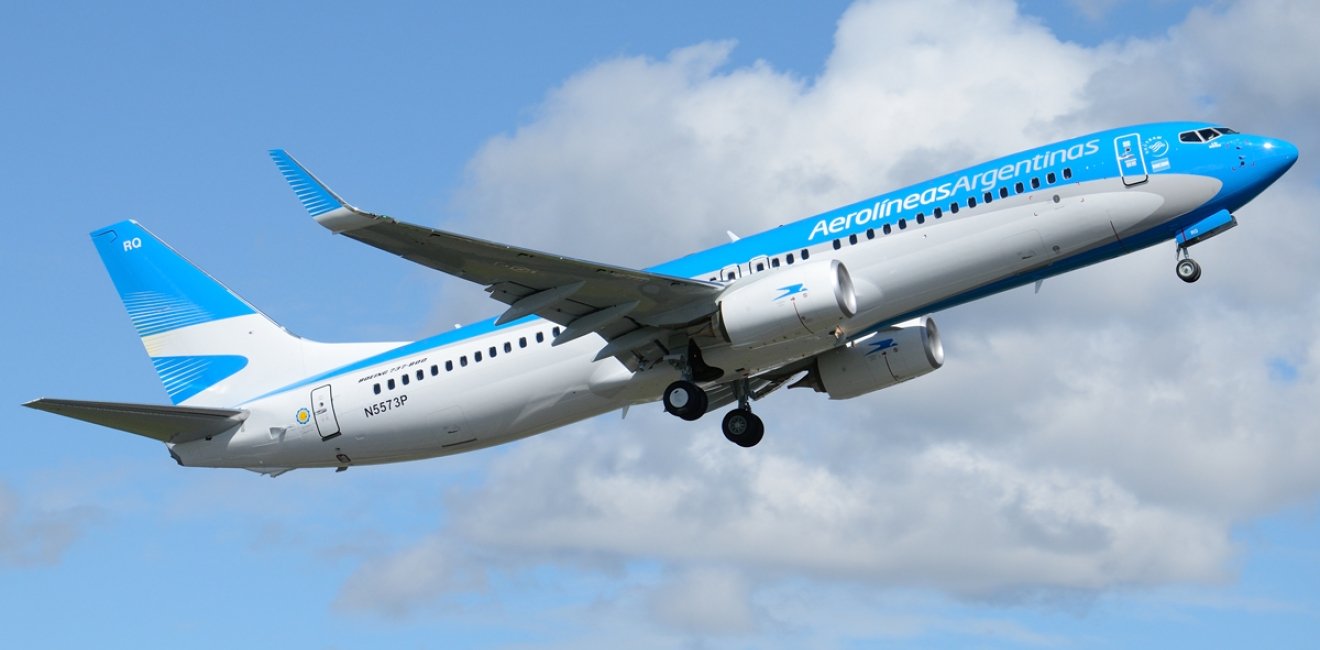To discuss Aerolíneas Argentinas’s health and future in Argentina’s rapidly-changing airline sector, we spoke to Leandro Serino, an associate researcher at CIPPEC, an instructor in business planning and project management at the International Air Transport Association and a former Aerolíneas Argentinas executive.
Q: Since 2008, Aerolíneas Argentinas has been in state hands, and cost Argentine taxpayers billions of dollars in subsidies. Under President Mauricio Macri, subsidies to the airline have declined from $553 million in 2015 to $168 million in 2017, according to government data. Why has there been such a decline in subsidies, and do you foresee Aerolíneas Argentinas becoming profitable in the near future?
A: Subsidies to Aerolineas Argentinas have been declining. The process started with the previous administration, and has accelerated in recent years. Unfortunately, it appears that trend ended last year. The airline’s economics and its financial needs depend on factors such as efficiency gains, demand growth, the exchange rate and the price of oil – these last two are beyond its control.
Aerolineas Argentinas seems to be optimizing its operation and reducing costs through the renegotiation of contracts. Still, in 2018, those efficiency gains did not compensate for increases in jet fuel prices, which were 30 percent higher than the previous year. Nor did they make up for the devaluation of the peso, which reduced demand among Argentine travelers, and increased the cost of imported or dollar-denominated inputs. According to a recent study by the Centro de Economía Política Argentina (CEPA), government subsidies for Aerolineas Argentinas last year came to $330 million, almost double the level in 2017.
As for the future, as Aerolineas Argentinas’s CEO, Luis Malavido, said recently, the company needs to grow to become profitable. Aerolineas has to offer a good and reliable product, and increase the number of available seats, whether by flying its aircraft for more hours or introducing more or larger aircraft. As far as I know, the company is not planning to expand its fleet, but it could potentially increase aircraft utilization – which is now at around 10 hours per day, lower than that of other Latin American carriers. If these options are not feasible, it will be difficult to become profitable.
Q: In the past month, strikes by Aerolíneas Argentinas employees have disrupted hundreds of flights, as workers demand higher wages, oppose changes to working conditions, and protest the liberalization of the aviation industry. The government says these workers make above average wages and benefits, and enjoy generous working conditions compared to their counterparts at other airlines in the region. Does Aerolíneas Argentinas have uncompetitive labor contracts? Will the Argentine government succeed in these reforms?
A: It is important to understand that workers have not been demanding improvements to their working conditions, but rather calling for compliance with their contracts.
According to official data, in 2017, Aerolineas Argentinas had 12,483 employees and 82 aircraft – a ratio of 152 employees per plane. Using these resources, the company offered 2.4 million ASKs per employee (or available seat kilometers, the measure of the company’s output), and carried 1,050 passengers per employee. These performance indicators improved significantly under the current and previous administrations, but still lag behind regional and international carriers. Latin American carriers have on average 120 employees per aircraft (20 percent fewer than Aerolineas Argentinas), produce 2.6 million ASKs per workers (10 percent more than Aerolineas Argentinas) and carry almost 1,300 passengers per employee, almost 25 percent more than Aerolineas Argentinas.
These figures suggest two things: First, Aerolineas Argentinas has been improving in recent years. Second, it still needs to improve its performance. Indeed, Aerolineas Argentinas reduced subsidies per passenger from $135 in 2009 to $13 in 2017, showing it is possible to achieve win-win outcomes, where employees work more, the company grows and subsidies fall.
Q: One of the most ambitious reforms under Mr, Macri was the liberalization of Argentina’s aviation market, allowing new airlines, especially low-cost carriers, to enter the market. For decades, Argentina has lagged behind its neighbors in the number of passengers flying relative to market size: 24 passengers per 100 inhabitants, compared to 63 passengers per 100 inhabitants in Chile in 2016, according to the International Air Transport Association. Now that passenger travel is increasing in Argentina (total passenger travel was up 32 percent from January to November this year compared to the same period in 2015, according to the Empresa Argentina de Navegación), do you expect the liberalization process to continue, regardless of the outcome of next year’s presidential election in Argentina.
A: The Macri administration authorized new companies to fly in Argentina; assigned hundreds of route permits to these and other airlines; and de-regulated fares, stimulating price competition. At this point, the future of the sector depends more on the airline’s performance than on the results of this year’s election, as airlines and route permits have already been assigned.
In a country that lagged behind in terms of air travel, the new rules of the game stimulated both supply and demand. The question now is if capacity will continue growing quickly in an environment characterized by aggressive fare competition, slow (or negative) GDP growth and a devalued peso, which increases dollar-denominated costs and reduces dollar revenues.
It is possible we’ll enter a phase of slower capacity growth and some degree of industry consolidation. Recent financial problems for Andes airlines, a local carrier, suggest that the market will probably move in this direction. A similar conclusion follows if we compare Argentina to other, more mature, markets in the region: six carriers operate in a market with 12.5 million domestic passengers in Argentina, whereas three carriers operate in a market of similar size in Chile, and four carriers serve the 100 million passengers in the Brazilian market.
Q: The airline industry is well-known for its ups and downs globally, with unforeseen cost hikes (e.g., oil prices) and demand shocks (e.g., recessions) affecting profitability. A particularly acute issue for airlines in Argentina relates to the devaluation of the peso, as all major inputs, from gasoline to aircraft parts, are priced in dollars. Given the steep devaluation and the ongoing recession, how do you see the airline industry performing in the near term? Is the boom in air travel sustainable in this climate?
A: The argentine domestic market will continue growing in the future, though probably slower than in recent years, and with some turbulence, as mentioned above.
Author


Argentina Project
The Argentina Project is the premier institution for policy-relevant research on politics and economics in Argentina. Read more

Explore More
Browse Insights & Analysis
¡Afuera! Milei Puts his Stamp on Argentine Diplomacy

Smart Take | Javier Milei Wins Argentine Presidential Election Decisively: Now What?


